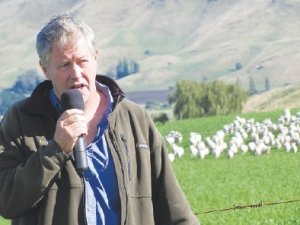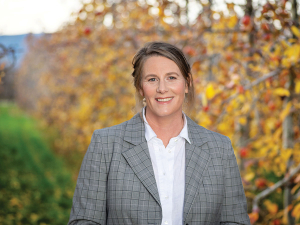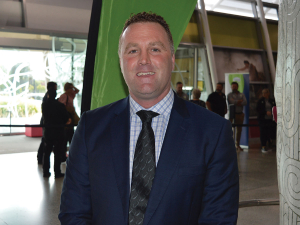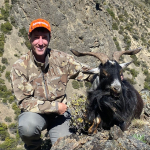It's part of the Future Forage Systems project funded by the Ministry for Primary Industry's Sustainable Farming Fund, Beef+Lamb New Zealand and Hawkes Bay Regional Council. The aim is to find which cultivars are most productive and persistent under grazing.
Buddo's broader objective is to grow lambs faster and see if lamb finishing on lucerne can compete with cash cropping, as he explained to BLNZ's recent pre-AGM field day at Poukawa.
Kinburn is a 232ha property and part of a larger 495ha operation based on four properties Rob and wife Coral own in the Poukawa Basin. On Kinburn he winters 3200 lambs, 200 one-year-old bulls and 60 two-year-old bulls. He also buys in up to 100 empty dairy cows which he gets in calf, and sells back to the dairy sector a year later. It's a large and complex operation, but well planned and managed.
It's typical dryland farming country. With the exception of this year, the hills are brown in summer. For some time Buddo had been seeking to improve the growth rates of the lambs that he puts through the property. After BLNZ's farm science conference last year, where Lincoln scientist Derek Moot extolled the virtues of lucerne, he decided to give it a go. Six 2.5ha blocks were sown giving him a 42-day round at 33 lambs/ha. His target is 350g/day weight gain, a 'big ask' but necessary for recouping the establishment costs of $1270/ha, including 6t/ha of lime.
"During establishment of the lucerne we had all sorts of hairy moments. We grew a bloody good crops of weeds and the first time we put lambs on here we couldn't see them for the weeds. But we knew with lucerne we needed plant population, so we had to be careful to protect the second germination of lucerne plants still getting under away.
"Today we are happy with the plant population we have, so going forward this gives us every chance to have a good operation."
When the first lambs went on, Buddo says, the results were astounding.
"We thought we'd cracked the code because some of these lambs were doing 500 grams a day. We thought this was easy. But when we got to the second round we just crashed and the lambs lost weight."
With hindsight, in the first round they were probably eating more weeds than lucerne and still needed time to adjust to the crop.
There was probably a gut-fill effect too, and the wet season meant the lucerne was only 14% dry matter, so they may have struggled to eat enough dry matter.
Ordinary pasture is needed as well as the crop while the rumen adjusts, something that's now part of Buddo's management practice.
This autumn some lambs are grazing a trial of ten varieties to find which best suits the area.
They're subject to normal grazing so neither farmer nor On-Farm Research scientist Muir can say which gives the best weight gain. The trial is essentially to find which survives and produces best under grazing.
Pasja brassica is also used for lamb finishing, and about 2000 lambs will be finished on lucerne and pasja this year, the remainder on ryegrass pasture.
Buddo aims to be at the top end of the bell curve distribution of producers, and that requires accurate data about lambs, not guesswork, he says. Lambs are electronically tagged to monitor weight gain, allowing him to tell which lambs perform best. He works closely with breeder James Falloon from whom he buys direct.
"Before they leave his place they are dipped and quarantine drenched and they are all set to go by the time they get here. There's quite a difference between his lambs and the ones you might pull out of the saleyards which might be more prone to ailments such as viral pneumonia. We can track the animal health status."
Knowing the lambs' origin also means they know they meet Lean Meats' animal welfare requirements, he adds. His involvement with Lean Meats has focused his mind on meeting consumer needs.
"I've been to the United States and to some of the discerning markets we supply. When you go there and talk to the consumer who buys your product out of the meat cabinet it really does give you that market connect.
"Interestingly the consumers are looking for that too. They want to know that the meat they are buying has been reared in a certain way. That includes being looked after properly. They also want to know that the food is safe and of extremely good quality."
Farmers have to realise that the advantages of the relationship with a meat company and the consumer is not all about price, he says.

















